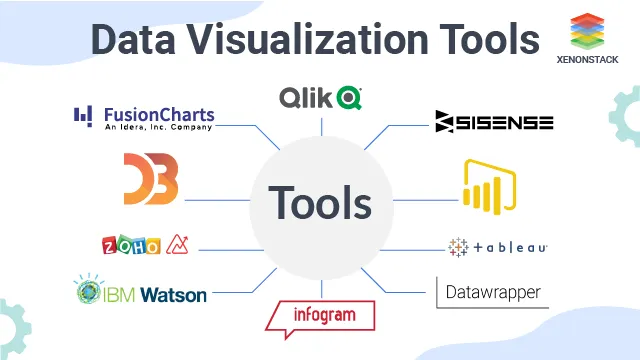Performance Optimization in Mechanical Data Storage
In the intricate tapestry of industrial operations, where precision and efficiency are paramount, the optimization of data storage in mechanical databases takes center stage. This blog post embarks on a journey through the realms of performance optimization in mechanical data storage, exploring strategies for database performance tuning and delving into the nuances of optimizing data storage for seamless functionality.
Performance Optimization in Mechanical Data Storage
The storage and retrieval of data in mechanical databases are pivotal elements of industrial data management. Performance optimization in this context involves enhancing the speed, efficiency, and reliability of storing and retrieving data. Let’s delve into key strategies for achieving optimal performance in mechanical data storage:
Indexing Strategies
Efficient indexing is fundamental to performance optimization in mechanical data storage. Indexes provide a roadmap for the database engine to quickly locate and retrieve specific data. In mechanical databases, where large datasets are common, strategic indexing on frequently queried fields accelerates data retrieval, reducing response times and enhancing overall system performance.
Partitioning Techniques
Partitioning involves dividing large tables into smaller, more manageable segments. This technique is particularly beneficial in mechanical databases dealing with vast amounts of historical data. By partitioning tables based on time intervals or other relevant criteria, organizations can streamline data access, improve query performance, and facilitate efficient data archiving.
Compression and Storage Efficiency
Optimal storage efficiency is achieved through compression techniques that reduce the physical size of data. In mechanical databases, where sensor data and monitoring information can accumulate rapidly, implementing compression not only saves storage space but also enhances data retrieval speed. Efficient storage ensures that databases operate smoothly, even as data volumes grow.
Caching Mechanisms
Caching involves temporarily storing frequently accessed data in high-speed memory for rapid retrieval. By implementing caching mechanisms, organizations can significantly reduce the need to repeatedly access the underlying storage infrastructure. This approach is particularly effective in scenarios where certain data points are queried frequently, such as real-time monitoring of equipment parameters.
Database Performance Tuning for Mechanical Applications
Database performance tuning is a strategic process aimed at optimizing the overall performance and responsiveness of database systems. In the context of mechanical applications, where timely access to data is critical, performance tuning becomes a linchpin for ensuring seamless operations. Let’s explore key aspects of performance tuning for mechanical databases:
Query Optimization
Fine-tuning SQL queries is a cornerstone of database performance tuning. Analyzing and optimizing the execution plans of queries ensure that the database engine retrieves data in the most efficient way possible. In mechanical databases, where complex queries are common, optimization techniques, such as indexing and query rewriting, play a pivotal role in enhancing responsiveness.
Resource Allocation and Scalability
Efficient resource allocation is vital for maintaining consistent performance, especially as mechanical databases scale. Performance tuning involves configuring resources such as memory, CPU, and storage to align with the specific requirements of the database workload. Additionally, designing databases to scale horizontally ensures that performance remains robust as data volumes and user demands increase.
Concurrency Control
Mechanical applications often involve multiple users or processes concurrently accessing and updating data. Effective concurrency control mechanisms prevent conflicts and ensure data consistency. Tuning parameters related to locks, isolation levels, and transaction management optimizes database performance in scenarios where concurrent access is prevalent.
Regular Maintenance and Index Rebuilding
Regular maintenance tasks, including index rebuilding and statistics updates, are integral to sustained performance in mechanical databases. Over time, as data distribution changes, indexes may become fragmented, impacting query performance. Database performance tuning involves scheduling routine maintenance tasks to optimize index structures and keep database statistics up to date.
Optimizing Data Storage for Mechanical Databases
Optimizing data storage for mechanical databases is a multifaceted endeavor that involves a strategic combination of architectural choices, storage technologies, and data management practices. Let’s explore key strategies for achieving optimal data storage in the context of mechanical databases:
Choosing Appropriate Storage Technologies
Selecting the right storage technology is foundational to optimizing data storage. In mechanical databases, where a mix of historical and real-time data is common, adopting a tiered storage approach can be advantageous. Frequently accessed or critical data can reside in high-performance storage, while less critical or archival data can be stored in more cost-effective, high-capacity storage.
Normalization and Denormalization
The choice between normalization and denormalization impacts data storage efficiency. Normalization, which minimizes redundancy by organizing data into separate tables, is beneficial for data integrity but may involve more complex joins in queries. Denormalization, on the other hand, involves storing redundant data to simplify queries. The optimal approach depends on the specific requirements of the mechanical database.
Archiving and Purging Strategies
Archiving historical data and implementing purging strategies are crucial for optimizing data storage. In mechanical databases, where historical data may no longer be actively queried, archiving older records to separate storage or implementing purging policies for obsolete data helps maintain optimal database performance and ensures that resources are focused on relevant data.
Storage Virtualization and Cloud Solutions
Storage virtualization and cloud-based solutions provide flexibility and scalability in managing data storage for mechanical databases. Virtualized storage allows for dynamic allocation of resources based on demand, optimizing storage efficiency. Cloud solutions offer the advantage of scalable, pay-as-you-go storage options, allowing organizations to adapt storage capacity to changing requirements.
Performance Benchmarks for Mechanical Data Storage
Performance benchmarks serve as the compass guiding organizations toward optimal data storage solutions. In the realm of mechanical data storage, where the speed of accessing and retrieving information is critical, performance benchmarks become invaluable. Let’s explore key considerations and benchmarks for evaluating the efficiency of mechanical data storage systems:
Throughput and IOPS (Input/Output Operations per Second)
Throughput measures the amount of data that can be processed within a specific time frame. For mechanical data storage, high throughput is essential for handling the continuous influx of real-time data. IOPS, on the other hand, reflects the speed at which individual read or write operations can be performed. A robust mechanical data storage solution should exhibit high throughput and IOPS to support rapid data processing.
Latency and Response Times
Low latency and quick response times are paramount in mechanical data storage. Latency represents the delay between issuing a request and receiving a response. In the context of industrial applications, where real-time monitoring and control are crucial, minimizing latency ensures that critical data is accessed promptly. Performance benchmarks should aim for low-latency and swift response times to meet the demands of time-sensitive operations.
Scalability
Mechanical data storage systems must be scalable to accommodate the growing volumes of data generated in industrial settings. Scalability benchmarks evaluate how well a storage solution can handle an increasing workload without compromising performance. Whether scaling vertically to add more resources to a single machine or horizontally by adding more machines to a cluster, scalability ensures sustained performance as data volumes expand.
Reliability and Availability
Reliability and availability benchmarks assess the robustness of mechanical data storage systems. In industrial environments, where downtime can have significant consequences, it’s crucial to ensure high reliability and availability. Performance benchmarks should consider metrics such as Mean Time Between Failures (MTBF) and Mean Time to Recover (MTTR) to gauge the resilience of the storage solution.
Improving Query Performance in Databases:
Query performance is a pivotal aspect of database efficiency, influencing the speed and accuracy with which data is retrieved. Improving query performance is a strategic endeavor that involves optimizing SQL queries, implementing indexing strategies, and fine-tuning database configurations. Let’s explore key strategies for enhancing query performance in databases, particularly in the context of mechanical data:
Query Optimization Techniques
Query optimization is the process of ensuring that SQL queries are executed in the most efficient way possible. Techniques such as rewriting queries, using appropriate join types, and minimizing the use of unnecessary functions contribute to improved query performance. For mechanical databases dealing with complex data relationships, query optimization is instrumental in accelerating data retrieval.
Strategic Indexing
Indexing is a cornerstone of query performance improvement. By strategically indexing columns frequently used in WHERE clauses or JOIN conditions, organizations can significantly reduce the time it takes to locate and retrieve data. In mechanical databases, where datasets can be extensive, effective indexing becomes imperative for timely access to critical information.
Partitioning Tables
Partitioning involves dividing large tables into smaller, more manageable segments based on specific criteria. This technique aids in query performance by minimizing the amount of data that needs to be scanned. In the context of mechanical data, where historical data may be queried differently from real-time data, partitioning tables based on time intervals or other relevant factors enhances overall query efficiency.
Caching Mechanisms
Caching involves storing frequently accessed data in high-speed memory for rapid retrieval. Implementing caching mechanisms at various levels, such as query result caching or system-level caching, reduces the need to repeatedly access the underlying storage infrastructure. In scenarios where specific queries are frequently executed, caching improves response times and optimizes query performance.
In-Memory Storage Solutions for Performance Optimization
In the pursuit of unparalleled speed and responsiveness, in-memory storage solutions emerge as a transformative force in performance optimization. By storing and manipulating data directly in the system’s RAM, in-memory storage eliminates the latency associated with traditional disk-based storage. Let’s explore the advantages and applications of in-memory storage solutions for optimizing performance in mechanical data storage:
Speed and Low Latency:
The hallmark of in-memory storage solutions is their ability to deliver exceptional speed and low latency. With data residing in RAM, the need for disk reads is eliminated, resulting in near-instantaneous data access. In the context of mechanical data storage, where real-time monitoring and control are imperative, the speed offered by in-memory solutions ensures that critical data is available without delay.
Real-time Analytics
In-memory storage solutions facilitate real-time analytics by providing rapid access to data for on-the-fly analysis. Organizations can derive immediate insights from their mechanical data, whether it’s monitoring equipment parameters, analyzing production metrics, or detecting anomalies. The agility offered by in-memory storage is particularly valuable in applications requiring instant decision-making based on fresh data.
Complex Event Processing (CEP)
In-memory storage is well-suited for Complex Event Processing (CEP), a technique that involves identifying and analyzing patterns within a stream of events. In the context of mechanical data, CEP can be applied to detect complex patterns or sequences indicative of potential issues. In-memory storage enables rapid event processing, allowing organizations to respond promptly to evolving conditions.
Handling Large Datasets
Mechanical data storage often involves managing large datasets, especially in industrial settings with extensive sensor networks. In-memory storage solutions excel at handling large volumes of data without sacrificing performance. The ability to efficiently process and analyze vast datasets in real time positions in-memory storage as a game-changer for organizations dealing with extensive mechanical data.
In the realm of industrial data management, the quest for optimal performance in mechanical data storage involves navigating the seas of performance benchmarks, query optimization, and the transformative potential of in-memory storage solutions. By embracing strategic approaches, organizations can master efficiency, ensuring that their data storage systems operate seamlessly, delivering real-time insights and empowering the agility required for the demands of modern industrial operations.
Conclusion
In the ever-evolving landscape of industrial data management, the optimization of data storage and the fine-tuning of database performance are critical endeavors. As organizations in the mechanical sector strive for precision and efficiency, implementing strategic approaches, such as indexing, caching, and storage optimization, becomes imperative. The synergy between performance optimization and data storage strategies ensures that mechanical databases operate seamlessly, delivering real-time insights and fostering the agility required for the demands of modern industrial operations.










